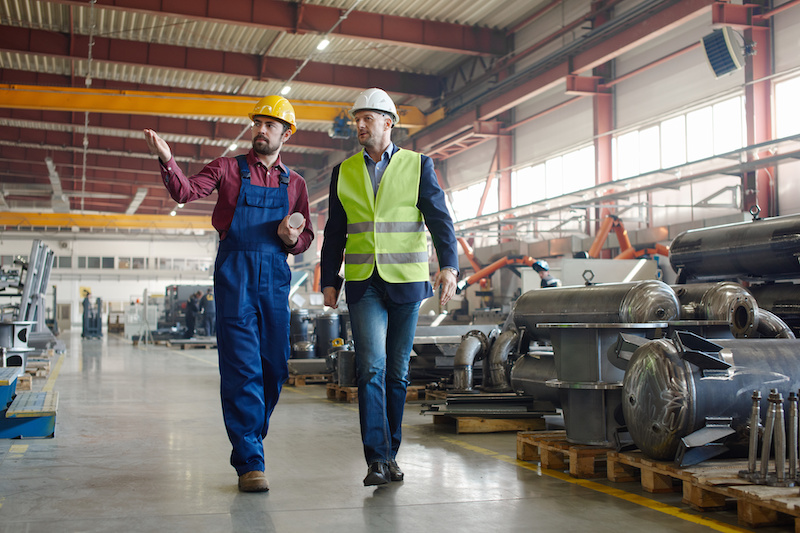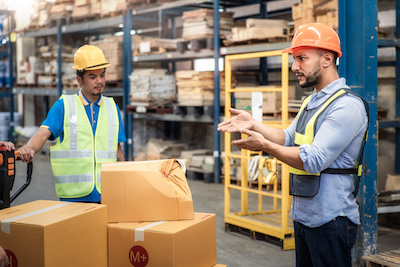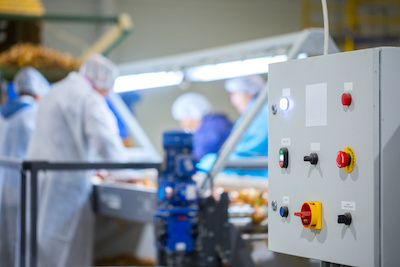Major Safety Risks Costing Industrial Facilities Over And Over Again
By Donald Markham

Few places are more at risk for safety accidents, damage, and injury than operations at industrial facilities.
Whether it’s in production environments, the warehouse, at the loading dock, or anywhere else in between, unexpected safety incidents carry consequences that can’t be ignored by operations and facilities specialists.
Among the more serious but not uncommon ones are: employee injuries, product and equipment damage, downtime and repair costs, as well as fines regulators may be forced to issue as a result of violations.
This is simply the nature of industrial environments involving workers in constant motion while operating dangerous equipment for long hours virtually every day of the year.
But just because occupational hazards come with the territory doesn’t mean one is expected to tolerate them, or to not take every precaution necessary to keeping facilities safe and protected at all times, especially when you know what to watch out for.
So what major safety risks are known happen over and over again that may end up costing you?
Keep reading to put a stop to them from now on while ensuring nobody gets hurt on your dime!
HAZARDOUS RISKS INSIDE
INDUSTRIAL FACILITIES
1. WAREHOUSE DAMAGE

The possibility of damage occurring in high-traffic warehouses is basically never-ending, as any number of products and inventory can be broken, bent, or become defective during transport.
And while these damaged goods can amount to untold losses in revenue, there’s another threat which can cost even more and lead to emergencies: damages to the warehouse itself.
Now, warehouse damage is likely to show itself in many forms. It can be structural and process related, but frequently it’s operable equipment that gets impacted the most.
One example reported on an ongoing basis by maintenance and facilities specialists is damaged rolling steel doors that fail to function properly when struck by forklifts and other moving objects.
Read More: Why Warehouse Traffic Accidents Are Around The Corner From Today
In fact, when it’s all said and done, tens of thousands of dollars are often spent every single year on repairs and replacements, without considering downtime costs sure to accrue until equipment is fully working again.
We know every type of damage which happens at the warehouse comes with a price. But that doesn’t mean there aren’t safe and impactable alternatives you can turn to from now on to make busy freight openings damage-proof!
2. CROSS-CONTAMINATION

The fact that germs can spread from one place to another is a major concern for production environments that can’t allow cross-contamination to take place due to product safety and compliance requirements.
Yet this is exactly what happens when surfaces and surroundings within industrial facilities do a better job of accumulating harmful bacteria than resisting it.
One common example are entrances that come frequently into contact with food, beverage, or pharmaceutical ingredients being handled left and right.
As soon as they start showing signs of rust and discoloration from daily sanitation procedures—caused by door materials that aren’t corrosion-resistant—they welcome contamination non-stop.
Read More: Surfaces Likely To Contaminate Processing Facilities
Of course, failing to replace rotting entrances is hardly an option when trying to deter regulators from uncovering traces of airborne contaminants flowing freely from one place to another. What is an option, however, is never having to put up with pedestrian doors that rust ever again, thanks to corrosion-resistant alternatives built for the harshest environments!
3. EMPLOYEE ACCIDENTS

Accidents involving employees at industrial facilities happen with frightening regularity and can quickly become a nightmare, depending on the extent of injuries suffered, associated costs, and loss of productivity.
So it’s clear that, given their number of moving objects, exposure to severe weather elements, and the operation of dangerous equipment happening all at once, loading docks deserve the utmost caution.
This is especially true for cargo-handling areas lagging behind the times, which can easily be spotted through unsealed perimeters, the use of manual dock levelers, and controls that fail to integrate seamlessly.
When least expected, any one of these inefficiencies increases the risk of people getting hurt; combined, it’s only a matter of time before everything comes crashing down in the worst ways.
Read More: Productivity Drains Putting Loading Docks At Risk
That’s why prioritizing seamless protection across busy loading docks is perhaps the simplest and most effective way to ensure safer shipments. By stopping harmful elements and productivity from slipping through the cracks, dock equipment that’s high-efficiency helps you do that automatically!


 Donald Markham is an experienced facility access specialist helping facility operations teams move the needle in the areas that matter most with proven door and dock solutions that got your back in every situation!
Donald Markham is an experienced facility access specialist helping facility operations teams move the needle in the areas that matter most with proven door and dock solutions that got your back in every situation!